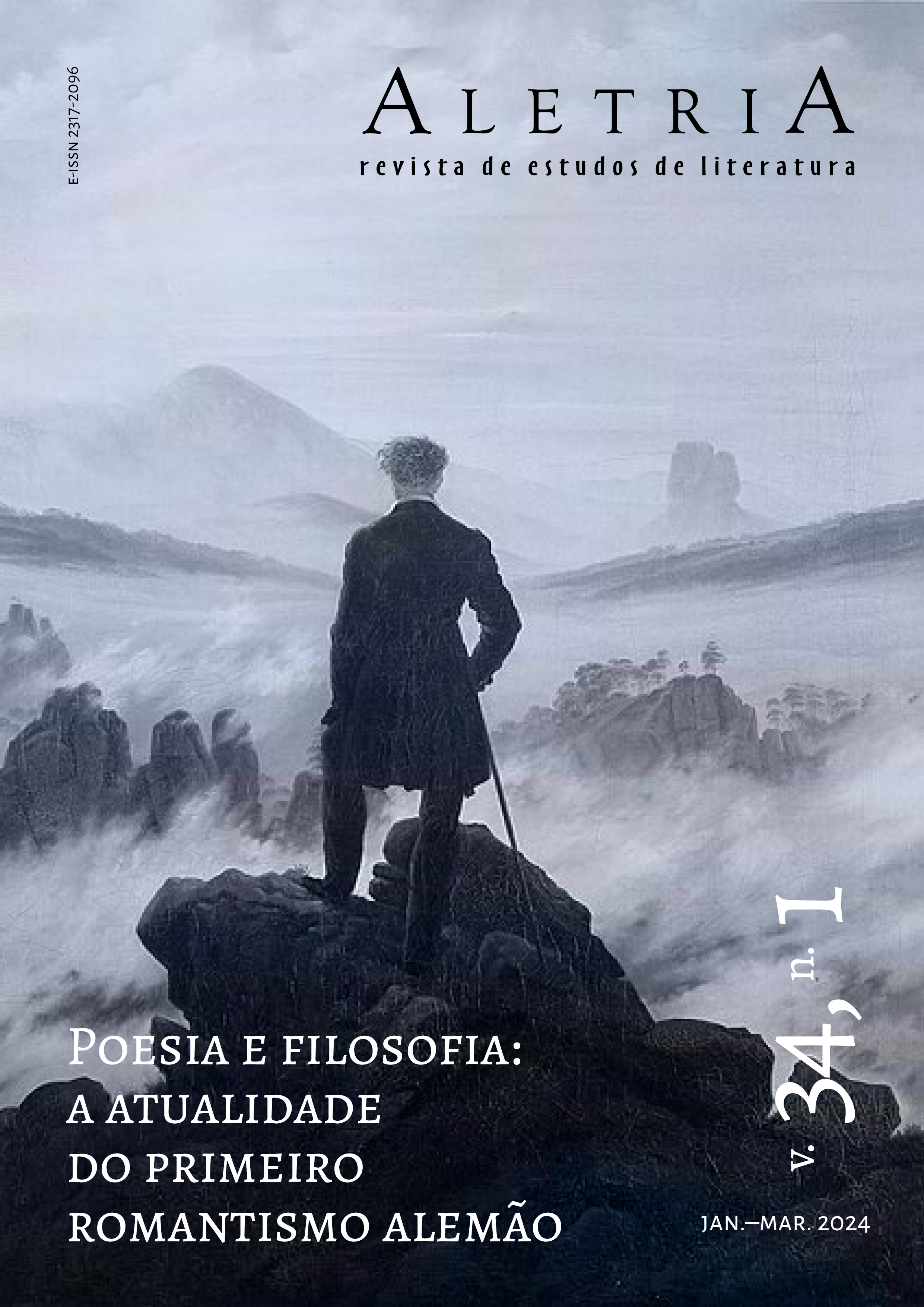Hamman’s Aestheticizing Anti-Aesthetics
Effluvia of Pre-Romantic Genius
Keywords:
Hamann, Aesthetic, Genius, Früromantik, PoetryAbstract
Considered a hermetic author, Johann Georg Hamann was often associated with philosophical and literary positions influential to the Sturm und Drang movement and as an early critic of the Enlightenment. His reflections on aesthetics, however, were received by the Frühromantik movement and may have provided important conceptual contributions to romanticism. This article aims to analyze how Hamann, in his essay Aesthetica in Nuce, develops a critique of a classicist and rationalist conception of aesthetics at the same time that he presents considerations about an aesthetics based on a relationship between poetry, creation and language. The article demonstrates how Hamann’s anti-aesthetic position favors the construction of an aestheticization that allows the insertion of a concept of genius that is important for understanding the conceptual precedents of the pre-romantic movement.
Downloads
References
ASSAIANTE, Julia Goesser. Body Language: Corporeality, Subjectivity, and Language in Johann Georg Hamann. New York: Peter Lang, 2011. (Studies on themes and motifs in literature)
AUERBACH, Erich. Mimesis: A representação da realidade na literatura ocidental. Trad. George Bernard Sperber. São Paulo: Perspectiva, 2011.
BATTEUX, Charles. Les Beaux-arts réduits a un même principe. Paris: Chez Durand: 1746.
BAUMGARTEN, Alexander Gottlieb. Äesthetik. Lateinisch-deutsch. Band 1. Hamburg: Felix Meiner, 2007.
BAYER, Oswald von. Vernunft ist Sprache: Hamanns Metakritik Kants. Stuttgart: Frommann-Holzboog, 2002.
BEHLER, Ernst. Frühromantik. Berlin: De Gruyter, 1992. (Sammlung Göschen)
BEISER, Frederick C. The Romantic Imperative: The Concept of Early German Romanticism. Cambridge: Harvard University Press, 2003.
BERLIN, Isaiah. Three Critics of the Enlightenment: Vico, Hamann, Herder. Princeton: Princeton University Press, 1997.
BROSE, Thomas. Johann Georg Hamann und David Hume: Metaphysikkritik und Glaub im Spannungsfeld der Aufklaerung – I und II. Pieterlen: Peter Lang, 2006.
HAMANN, Johann Georg. Aesthetica in Nuce; Eine Rhapsodie in Kabbalistischer Prose. In: HAMANN, Johann Georg. Hamann’s Schriften. Zweiter Theil. Ed. Friedrich Roth. Berlin: G. Reimer, 1821. p. 255-308.
HAMANN, Johann Georg. Des Ritters von Rosencreuz letzte Willensmeynung über den göttlichen und menschlichen Ursprung der Sprache. In: HAMANN, Johann Georg Hamann’s Schriften. Vierter Theil. Ed. Friedrich Roth. Berlin: G. Reimer, 1823. p. 21-37.
HAMMERMEISTER, Kai. The German Aesthetic Tradition. Cambridge: Cambridge University Press, 2002.
JØREGENSEN, Sven-Aage. Querdenker der Aufklärung: Studien zu Johann Georg Hamann. Göttingen: Wallstein, 2013.
REDMOND, Michael. The Hamann-Hume Connection. Religious Studies, v. 23, n. 1, p. 95-107, mar. 1987.
RICHTER, Jean Paul. Sämtliche Werke. Abteilung I, Band 5, Vorschule der Ästhetik, Levana oder Erziehlehre, Politischen Schriften. Frankfurt am Main: Zweiteausendeins, 1996.
SCHLEGEL, Friedrich. Kritischer Friedrich-Schlegel-Ausgabe. Erste Abteilung, Sechster Band. Geschichte der Alten und Neuen Literatur. Paderborn: Ferdinand Schöningh, 1961.
SCHLEGEL, Friedrich. Kritischer Friedrich-Schlegel-Ausgabe. Zweite Abteilung, Achtzehnter Band. Philosophische Lehrjahre – 1796-1806. Paderborn: Ferdinand Schöningh, 1963.
SPARLING, Robert Alan. Johann Georg Hamann and the Enlightenment Project. Toronto: University of Toronto Press, 2011.
TOLLE, Oliver. Herder e a metafísica. Discurso, n. 42, p. 97-116, 2013.
Downloads
Published
How to Cite
Issue
Section
License
Copyright (c) 2024 Lucas Lazzaretti (Autor)

This work is licensed under a Creative Commons Attribution 4.0 International License.
Authors who publish with this journal agree to the following terms:Authors retain copyright and grant the journal right of first publication with the work simultaneously licensed under a Creative Commons Attribution Non-Commercial No Derivatives License that allows others to share the work with an acknowledgement of the work's authorship and initial publication in this journal.Authors are able to enter into separate, additional contractual arrangements for the non-exclusive distribution of the journal's published version of the work (e.g., post it to an institutional repository or publish it in a book), with an acknowledgement of its initial publication in this journal.Authors are permitted and encouraged to post their work online (e.g., in institutional repositories or on their website) prior to and during the submission process, as it can lead to productive exchanges, as well as earlier and greater citation of published work (See The Effect of Open Access).





